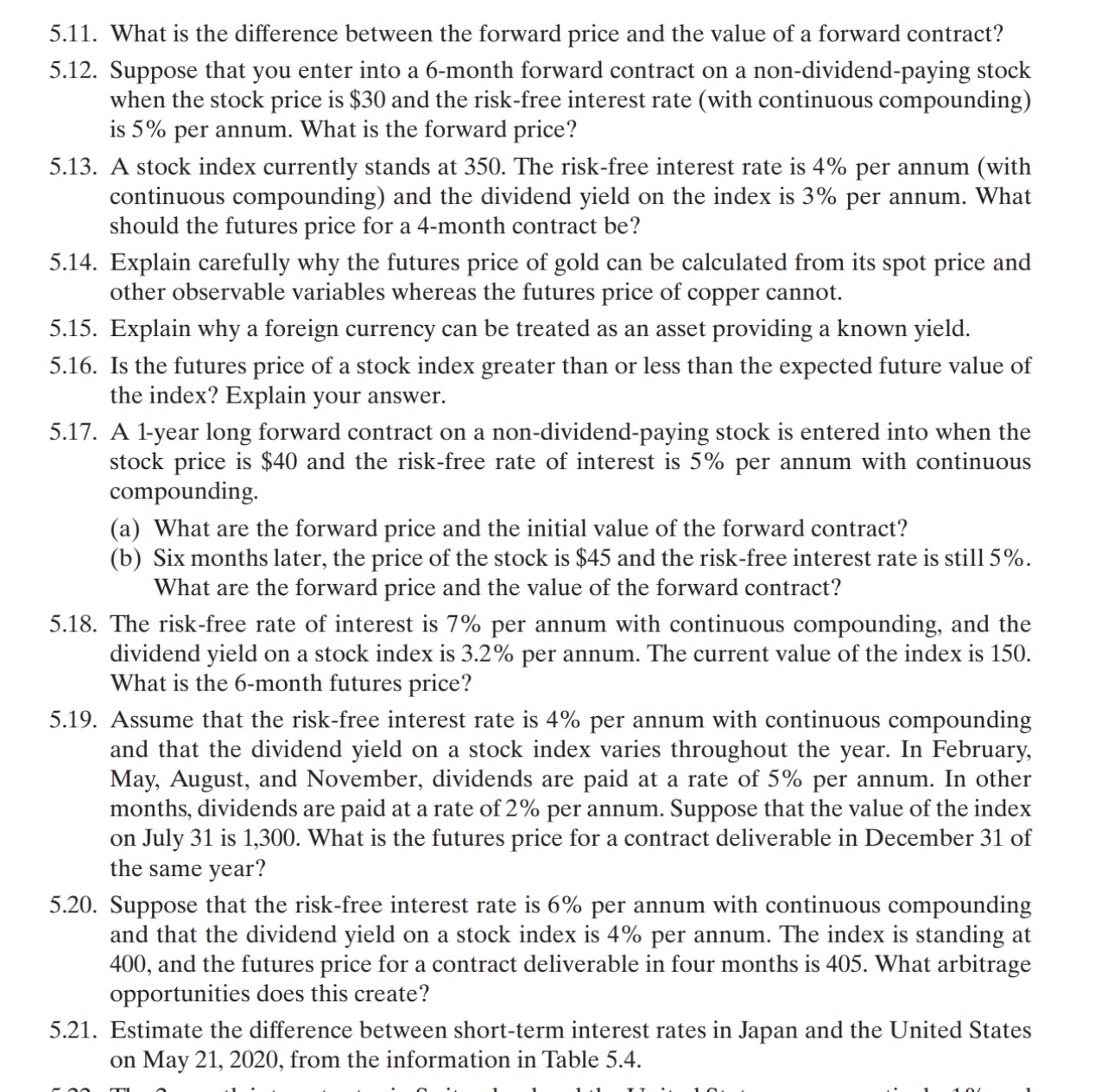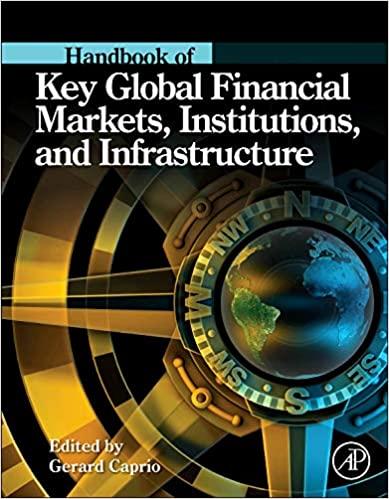Question
5.11. What is the difference between the forward price and the value of a forward contract? 5.12. Suppose that you enter into a 6-month forward
5.11. What is the difference between the forward price and the value of a forward contract?\ 5.12. Suppose that you enter into a 6-month forward contract on a non-dividend-paying stock when the stock price is
$30and the risk-free interest rate (with continuous compounding) is
5%per annum. What is the forward price?\ 5.13. A stock index currently stands at 350 . The risk-free interest rate is
4%per annum (with continuous compounding) and the dividend yield on the index is
3%per annum. What should the futures price for a 4-month contract be?\ 5.14. Explain carefully why the futures price of gold can be calculated from its spot price and other observable variables whereas the futures price of copper cannot.\ 5.15. Explain why a foreign currency can be treated as an asset providing a known yield.\ 5.16. Is the futures price of a stock index greater than or less than the expected future value of the index? Explain your answer.\ 5.17. A 1-year long forward contract on a non-dividend-paying stock is entered into when the stock price is
$40and the risk-free rate of interest is
5%per annum with continuous compounding.\ (a) What are the forward price and the initial value of the forward contract?\ (b) Six months later, the price of the stock is
$45and the risk-free interest rate is still
5%. What are the forward price and the value of the forward contract?\ 5.18. The risk-free rate of interest is
7%per annum with continuous compounding, and the dividend yield on a stock index is
3.2%per annum. The current value of the index is 150 . What is the 6-month futures price?\ 5.19. Assume that the risk-free interest rate is
4%per annum with continuous compounding and that the dividend yield on a stock index varies throughout the year. In February, May, August, and November, dividends are paid at a rate of
5%per annum. In other months, dividends are paid at a rate of
2%per annum. Suppose that the value of the index on July 31 is 1,300 . What is the futures price for a contract deliverable in December 31 of the same year?\ 5.20. Suppose that the risk-free interest rate is
6%per annum with continuous compounding and that the dividend yield on a stock index is
4%per annum. The index is standing at 400 , and the futures price for a contract deliverable in four months is 405 . What arbitrage opportunities does this create?\ 5.21. Estimate the difference between short-term interest rates in Japan and the United States on May 21, 2020, from the information in Table 5.4.

Step by Step Solution
There are 3 Steps involved in it
Step: 1

Get Instant Access to Expert-Tailored Solutions
See step-by-step solutions with expert insights and AI powered tools for academic success
Step: 2

Step: 3

Ace Your Homework with AI
Get the answers you need in no time with our AI-driven, step-by-step assistance
Get Started


